I’m totally down if you wanna eat at the new Korean restaurant, but you can order for us cause your Korean’s much better than mine, and I’m not even sure what all that stuff is on the menu.
Does this sound familiar? Korea has been my home for over two years, and yet, I still get anxious if I go to an unfamiliar restaurant and order from a new menu. This is especially true when the restaurant staff look busy, I feel that the staff will have little patience with me, and the menu is exclusively in Korean. I can read Korean, but I often let Korean friends both decide what we eat and communicate our order. But I’m fed up of being dependent on others. I need to finally learn how to recognize meals, and communicate basic orders with confidence.
On my quest for enlightenment, I’ve enlisted the help of foodie experts and local Koreans, all of whom know a ton more about Korean food and language than I do. Together, we present Korean grilled meals (cooked before you), meals brought to your table, useful words and phrases, and our personal favourites you must try! A big thank you goes out to Buyeon Kim who translated much of our menu list into hangul so that readers of Korean can identify these meals on street posters and menus.
Rather than attempt a comprehensive list of Korean meals, this is a simple guide, designed for tourists and expats. Hopefully, we’ll introduce some new Korean delights to your pallet. Many delicious meals are not included here. Without further ado, let’s delve right in!
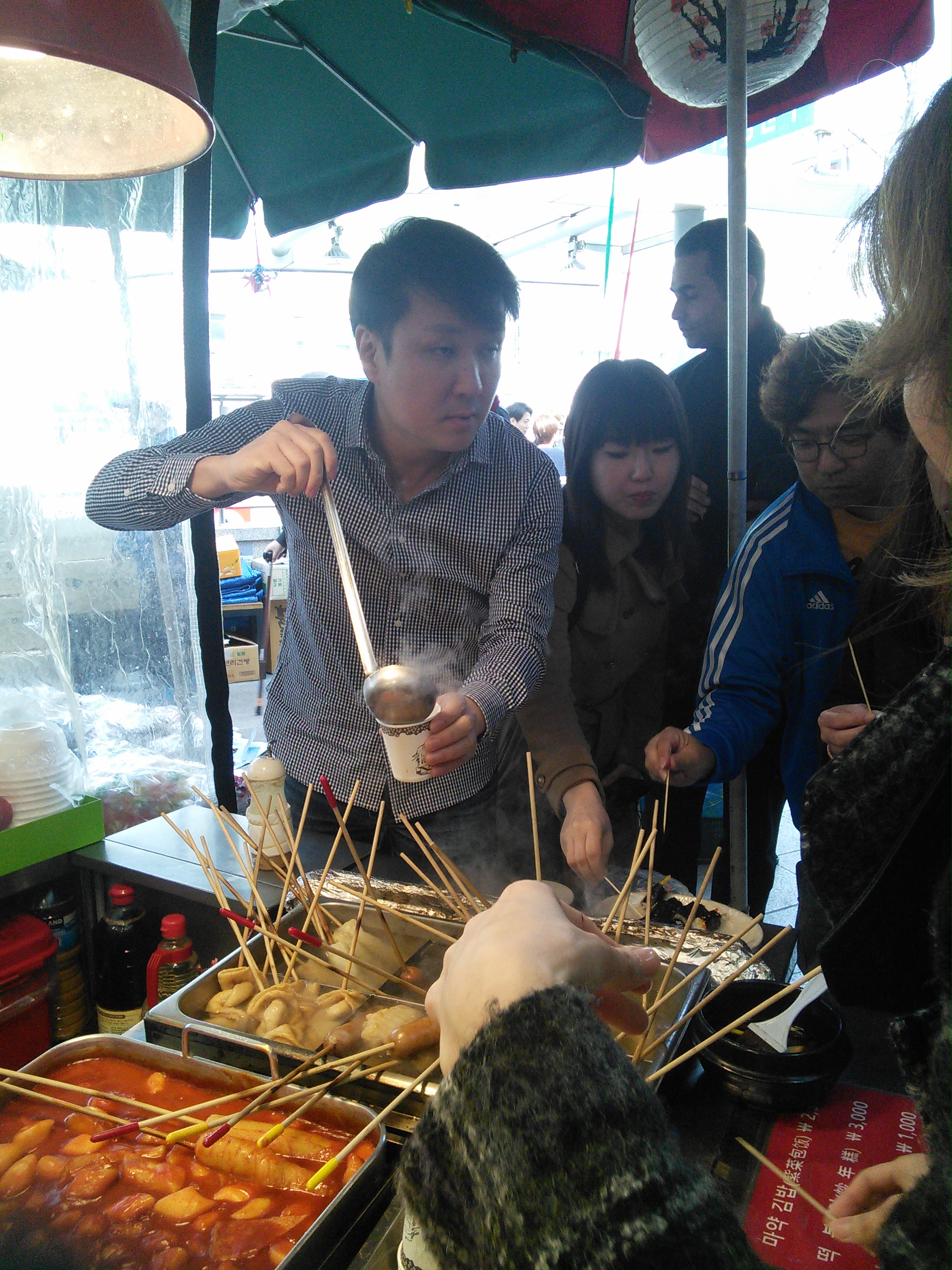
Dduck bbokki (떡볶이) is an incredibly popular street food among local Koreans. Servings are made from thin, long rice cakes drenched in red sauce, and take-out portions are usually around 2,000 won. As a child growing up in Korea, I always dropped by a local restaurant en route home, and picked up dduck bokki. Today, I still love this tasty snack. Dduck bokki is available at pretty much every Korean market, however, you can also make it yourself. Bring water to the boil, add pre-purchased rice cakes, heat and drain. Add red pepper paste to add spice and flavour, and a little sugar or soda pop to sweeten. Stir in sliced green onions and allow flavour to soak into the rice cakes and enrich their flavour. Enjoy! By Buyeon Kim
Bulgogi (불고기) 8,000-32,000 won (per person)
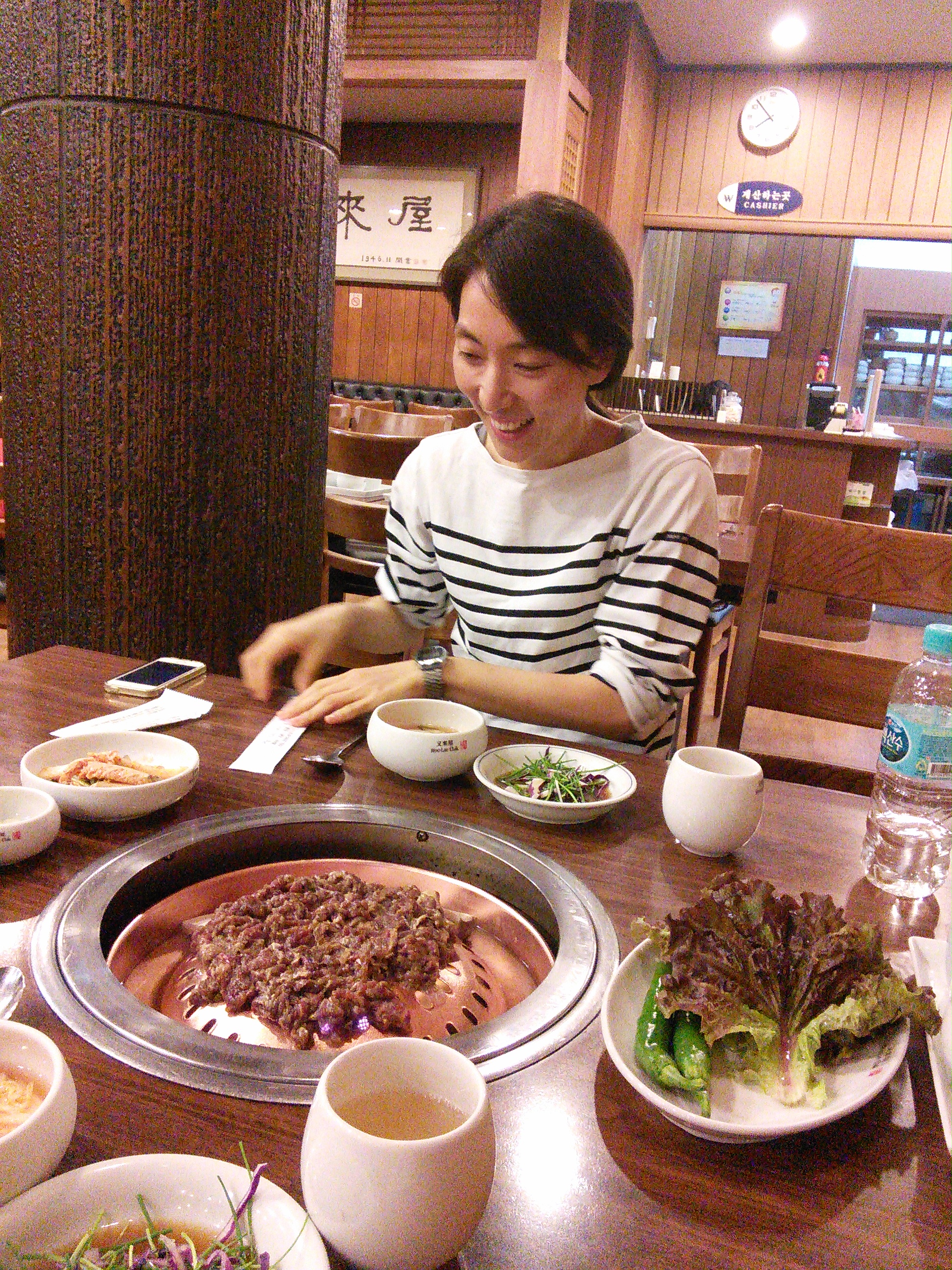
Origogi (오리 고기) smoked duck meat on the grill, 10,000 won (per person)
Samgyeopsal (삼겹살) prices based on cut of meat; 6,000-12,000 won (per person)
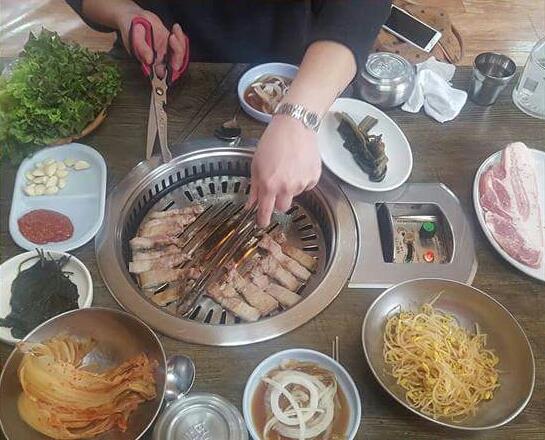
I’m always up for Samgyupsal (삼겹살 6,000-12,000 won per serving ) pork belly barbeque. The pork must have a perfect ratio of lean meat to fat, and the side accompaniments play an important role. Samgyopsal is usually served with greens (lettuce, kale, sesame leaves, beet greens, and others) used to wrap the meat and side dishes (banchan 반찬). Fire sources are charcoal or gas, and the hardware is often a grill, stone slab or iron pot lids. The iron pot lid have a large surface area which often hold onions, mushrooms, sour kimchi, sliced garlic, spicy bean sprouts, and of course, the pork belly. The meat and trimmings are traditionally eaten first. Round two entails servings of rice and a hot pot of soybean soup called Dwenjangjjigae (된장찌개). If you have room for round three, Bimbim Nengmyun (비빔냉면), cold, spicy noodles, or Mul Nengmyun (물냉면), cold, brothy noodles are recommended if you are particularly hungry! This makes the perfect meal. By Ji-Young Kim
Galmehgisal (갈매기살) 7,000-10,000 won (per person)
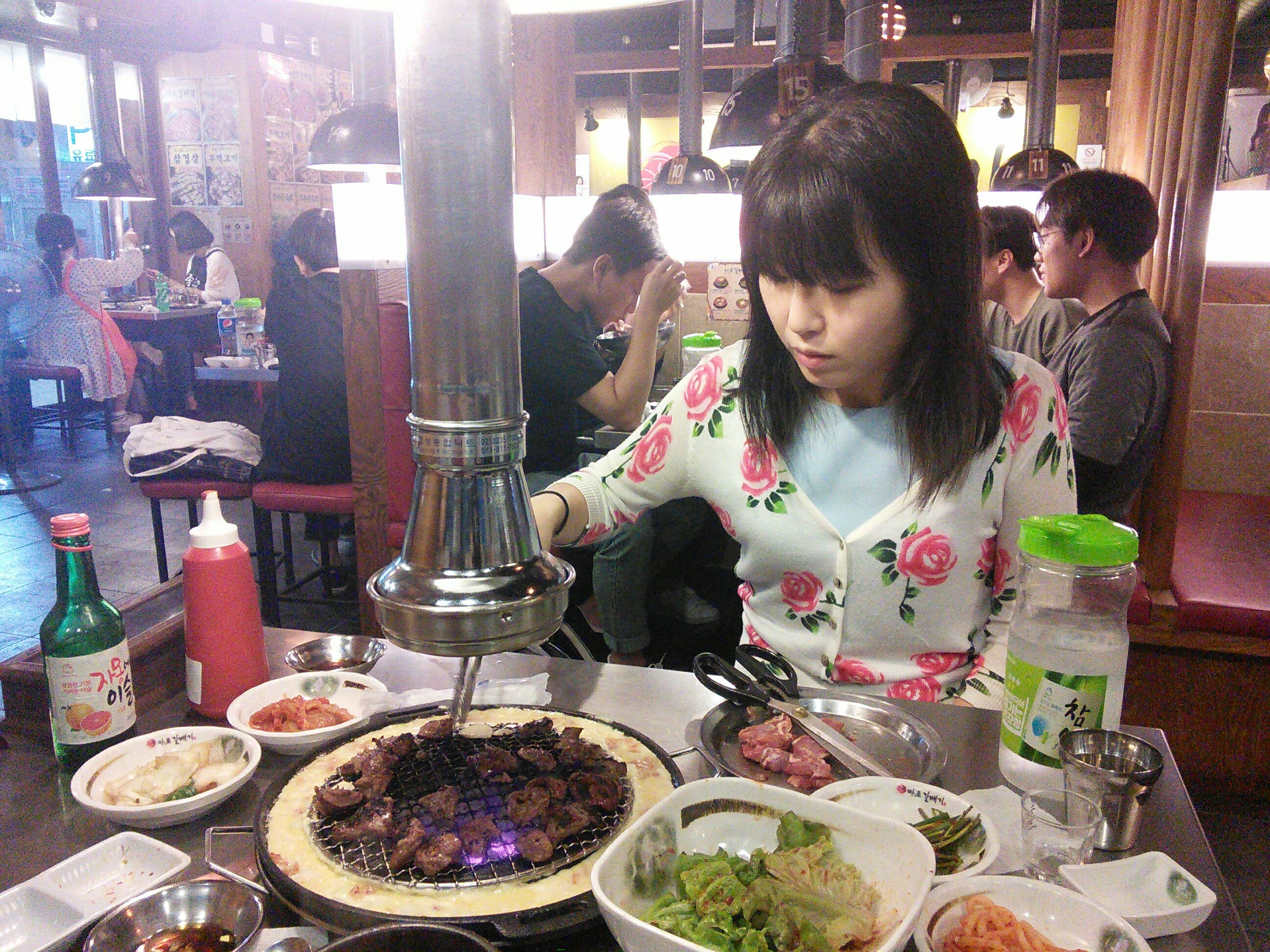
My favourite Korean meal is a type of Korean grilled Samgyopsal called Galmaekisal (갈매기살). I enjoyed this dish with Buyeon at a chain restaurant in Hongdae, Seoul, and the price was around 10,000 won per person. The grilled pork is cooked on a circular table grill accompanied by an omelette. The omelette cooks around the perimeter of the grilling dish. We also ordered a salty, soybean soup which complemented the meal very well. The galmaekisal cut of meat is one of the most tasty cuts I’ve ever tried. Also, making the omelette is a lot of fun because you get to distribute little vegetables, provided in a side dish, into the circular grill mold where the omelette cooks. Then you add the prepared egg mixture by pouring it over your vegetables. This meal is so much fun both to cook and to eat!” By Natasha Banky
Moksal (목살) leaner cut of grill meat, 6,000-14,000 (per person)
Deung Galbi (등갈비) 9,000-25,000 won (per person)
Gopchang (곱창) 7,000 won-15,000 won (per person)
SengSun Guwee (생선구이) 6,000won-40,000 won (mixed platter)
Jang-Uh Guwee (장어구이) 7,000won-50,000 won (mixed platter)
Chadolbagi (차돌박이) 10,000-25,000 won (per person)
Haemul gui (해물구이) fresh steamed or grilled seafood available at waterfronts and port towns; 25,000-90,000 (mixed platter)
Dakgalbi (닭갈비) 8,000-13,000 won (per person)
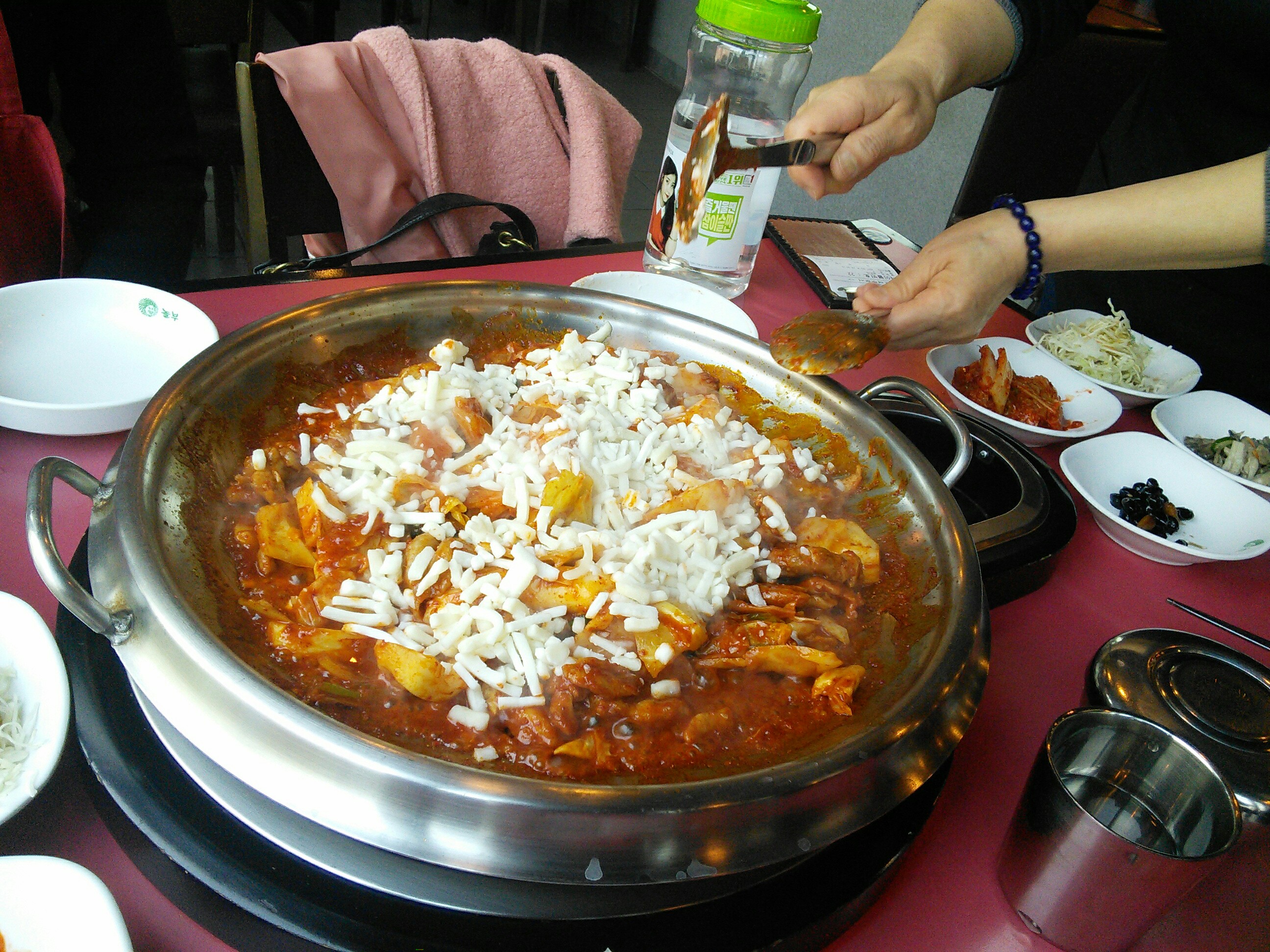
My favorite Korean food has to be Dalkgalbi (닭갈비 – 8,000-13,000 won per person)! It is an amazing combination of shredded chicken, rice cakes, cabbage, onion, pepper and red pepper paste, fried on a grill over an open fire in the center of a table. It is great accompanied by beer mekju (맥주) or rice wine makkeoli (막걸리). You can choose how spicy you want your platter, from #1 being the lowest, to #5 being super spicy. I usually request spice level #2 or #3 to help bring out the flavor of the dish. Usually, it is served with lettuce, cabbage and perilla leaves to wrap the chicken mixture in. Of course, there is always the usual banchan (side dishes) including kimchi, salad bean sprouts, and garlic that accompany the dish as well. Finally, there is often an option to add shredded cheese. When you have finished your meal, the server will bring out Bokembop (볶음밥)to cook on the same dalkgalbi grill. Bokembop is a mixture of spiced rice, seaweed and egg. It is a great way to finish this hearty meal. By Dan Schmidt
OUR MOST POPULAR MEALS BROUGHT TO YOUR TABLE
Mul Nengmyeon (물냉면) 6,000 won
Bibim Nengmyeon (비빔 냉면) 6,000 won
Bibimbap (비빔밥) 9,000 won
Dongkas (돈까스) 7,000 won
Kimbap (김밥) 2,000-5,000 won
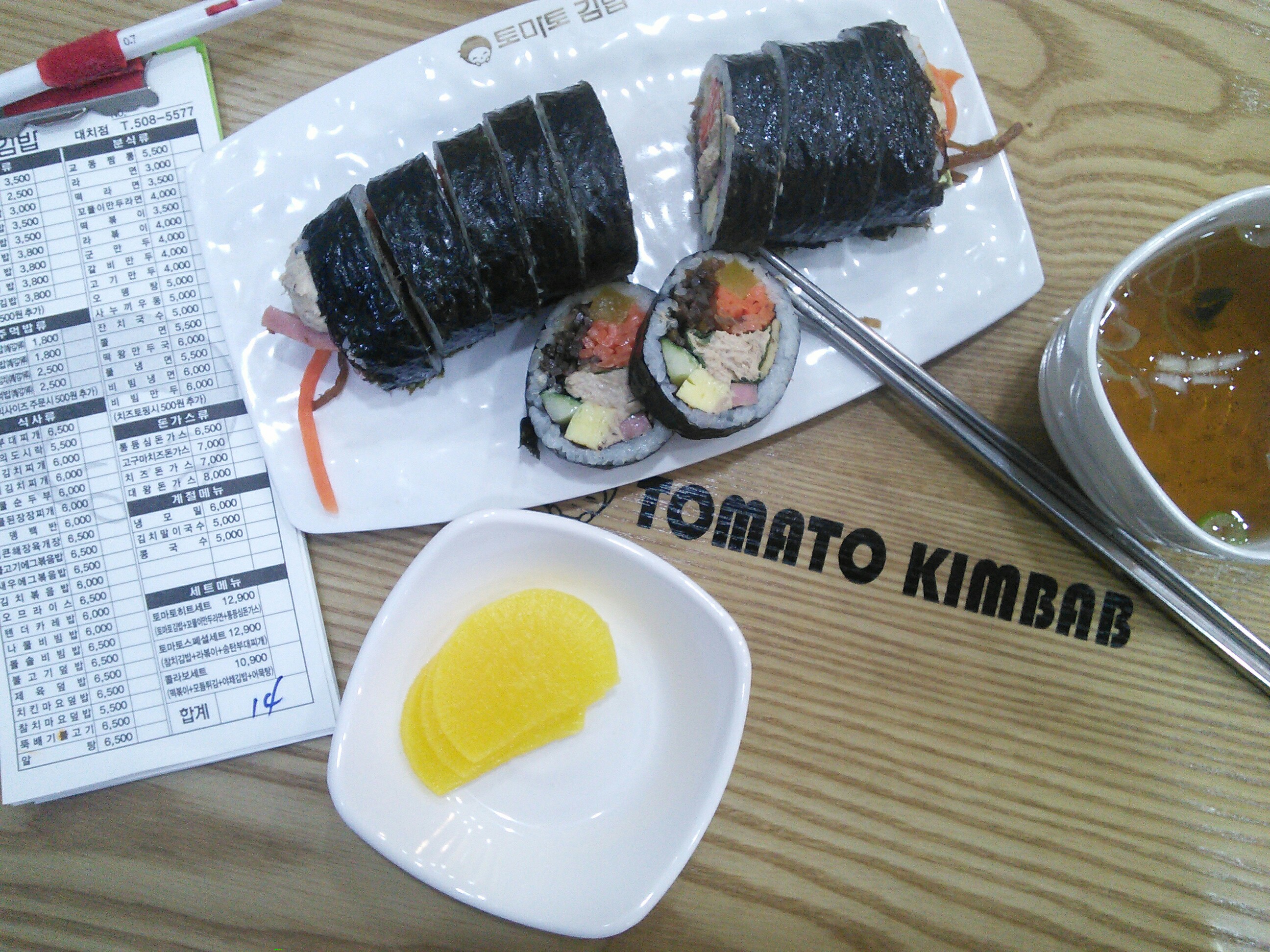
When you’re in a rush, or want a low calorie food item, Kimbap (김밥) is an excellent choice. It consists of vegetables, pickled radish, and is often offered with Kimchi, tuna or spam rolled in rice and dried seaweed. Kimbap toppings and ingredients have transformed due to changing tastes and globalization. Kimbap is offered everywhere, from small kiosks to larger restaurants, and prices vary between 2,000 to 5,000 won. Popular chain restaurants include Kimbap Nara and Kimbap Sarang, while Baruda (바르다) and Gimsongseng (김선생) are well known for their quality and composition. By Sophie Kim
YuggaeJang (육개장) 7,000-9,000 won
Shabu (샤부) 9,000-60,000 won
Jok bal (족발) 20,000-40,000 won
Jja jang Myun (짜장면) 3,000-7,00 won
Jja jang Myun (짜장면) is a Korean adaptation of a Chinese meal, which Koreans have made their own. It is very different from the Chinese original, and it can be found in Chinese restaurants in Korea. The meal consists of thicker noodles served in a black bean sauce(Chunjang), and both the noodles and sauce are typically served separately. The client usually mixes the sauce and noodles together. There are variations of this meal which add seafood, and include different side dishes such as kimchi and radish to the basic noodle and black bean sauce combination. These meals are usually around 7,000 won, however, depending on the type of restaurant you go to, it can vary between 3,500 to 10,000 won per serving. These soups are even available in instant noodle form (Jjappageti) at supermarkets. By Buyeon Kim
Soondubu Jigae (순두부찌개) 7,000 won
Samgehtang (삼계탕) 10,000-50,000 won
Bo Ssam (보쌈) 20,000-40,000 won
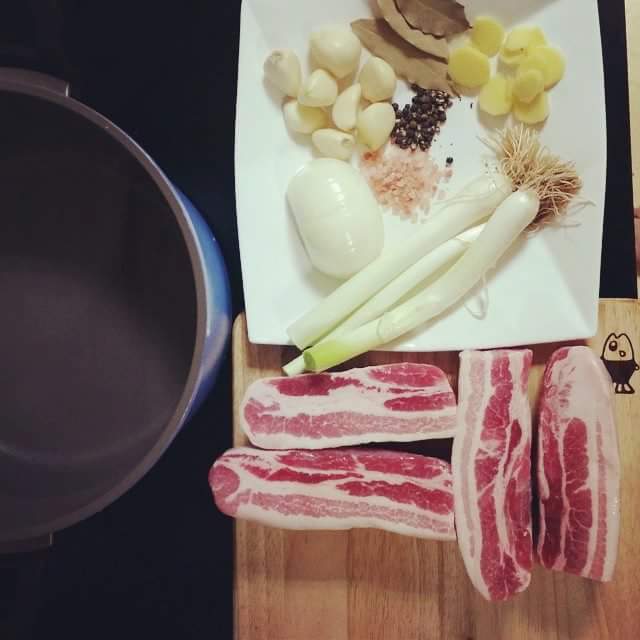
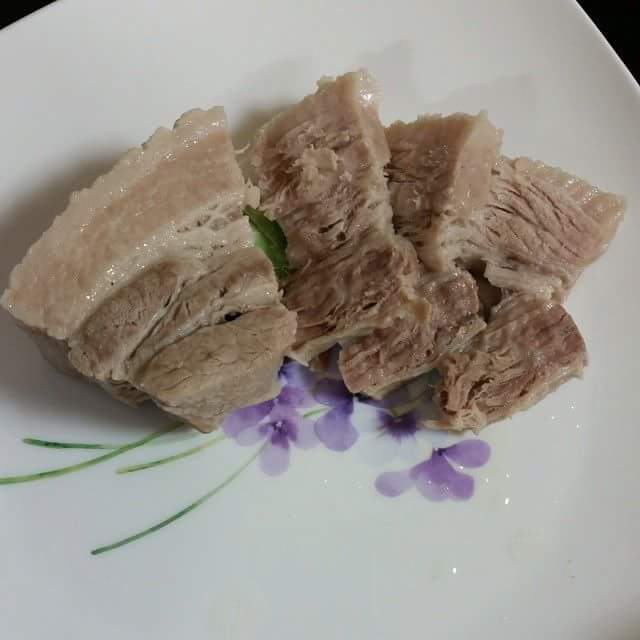
I fell in love with Bo Ssam (보쌈 – 20,000 to 40,000 won) the first time I ate it. Initially, it was more of an emotional connection than about the food and flavour itself. It was served as school lunch one day when I had been in Korea for maybe two months. I remember being homesick to the point of almost crying that morning. When lunch came around, I served myself, and the other teachers explained how to eat the food. I tried the meat on its own first. It tasted exactly like one of my mom’s meat dishes, and it was comforting and precisely what I needed at that moment. It felt like a hug from home. Bo Ssam is pork belly that’s been boiled instead of grilled and it is less greasy with a softer, more velvety texture than samgyeopsal. It is also served in much the same way as samgyeopsal, except that it comes to the table already cooked. A little packet of ssamjjang, raw garlic, and lettuce, with a slice of bo Ssam and some bo Ssam kimchi makes the perfect mouthful of flavour. Bo Ssam kimchi also happens to be the best kind of kimchi in my opinion since it’s still quite fresh and a little crunchy. The relative lightness of the meat and the freshness of the kimchi makes this a great alternative to samgyeopsal. By Sariska Fortuin-Schmidt
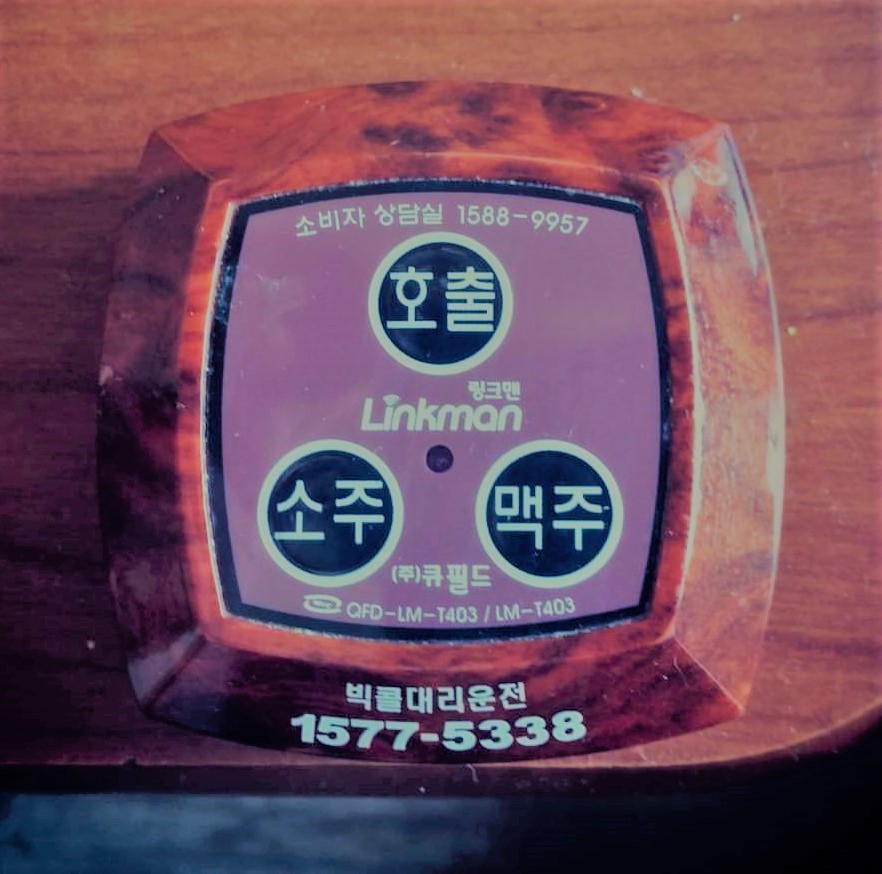
USEFUL FOOD WORDS
- Galbi 갈비 “meat”
- Dak 닭 “chicken” (Dakgalbi 닭갈비 “Spicy BBQ chicken”)
- So 소“beef”
- Seng sun 생선 “fish”
- Ori 오리 “duck”
- Samgyupsal 삼겹살 “BBQ pork belly”
- Soon sal 순살 “boneless”
- Gyeran 계란 “egg”
- Twigim 튀김 “fried”
- Guk 국 “soup” (Manduguk 만두국 “dumpling soup”)
- Tong 탕 “stew” (Galbitong 갈비탕 “meat stew”)
- Myun 면 “noodles” (Ramyun 라면 “noodle soup”)
- Bap 밥 “rice” (Gimbap 김밥 “Korean sushi rolls”)
- Mekju 맥주“beer”
USEFUL RESTAURANT PHRASES
- Yogiyo! 여기요“Excuse me/ over here please” (used in a casual restaurant)
- I inbun juseyo 이(two) 인분 주세요 “Please give me food for two people”
- Yang-i ulmankum na wha yo 양이 얼만큼 나와요 “How big is the serving size?”
- Mul jom duh juseyo 물 좀 더 주세요 “Please give me more water”
- Dul mep gae haejuseyo 덜 맵게 해주세요 “Please give me less-spicy food”
- Doe juseyo 더주세요“Give me more please”
- Kimchi jom doe juseyo 김치 좀 더 주세요“Please give me more Kimchi”
- Mul tee shoo juseyo 물티슈 주세요“Please give me wet wipes” (to wipe hands)
- Ap cheema juseyo 앞치마 있어요? “Please give me an apron” (Most BBQ places have these so you don’t get oil/food on your clothes)
- Hwajangsil udieyo? 화장실 어디에요? “Where is the toilet?”
MEET OUR CONTRIBUTORS:
 Sariska Fortuin-Schmidt is an enthusiastic eater from South Africa. For the past seven years, she lived in South Korea and fell in love with the country’s cuisine. She is currently back in South Africa with her husband and hopes to continue their culinary adventures in the Middle East, and someday, have a restaurant of their own.
Sariska Fortuin-Schmidt is an enthusiastic eater from South Africa. For the past seven years, she lived in South Korea and fell in love with the country’s cuisine. She is currently back in South Africa with her husband and hopes to continue their culinary adventures in the Middle East, and someday, have a restaurant of their own.
 Buyeon Kim is a 30-something Korean, professional language instructor, and global traveller. She has lived in Canada, enjoys touring Europe, is constantly planning her next trip. She dreams of living in new cities.
Buyeon Kim is a 30-something Korean, professional language instructor, and global traveller. She has lived in Canada, enjoys touring Europe, is constantly planning her next trip. She dreams of living in new cities.
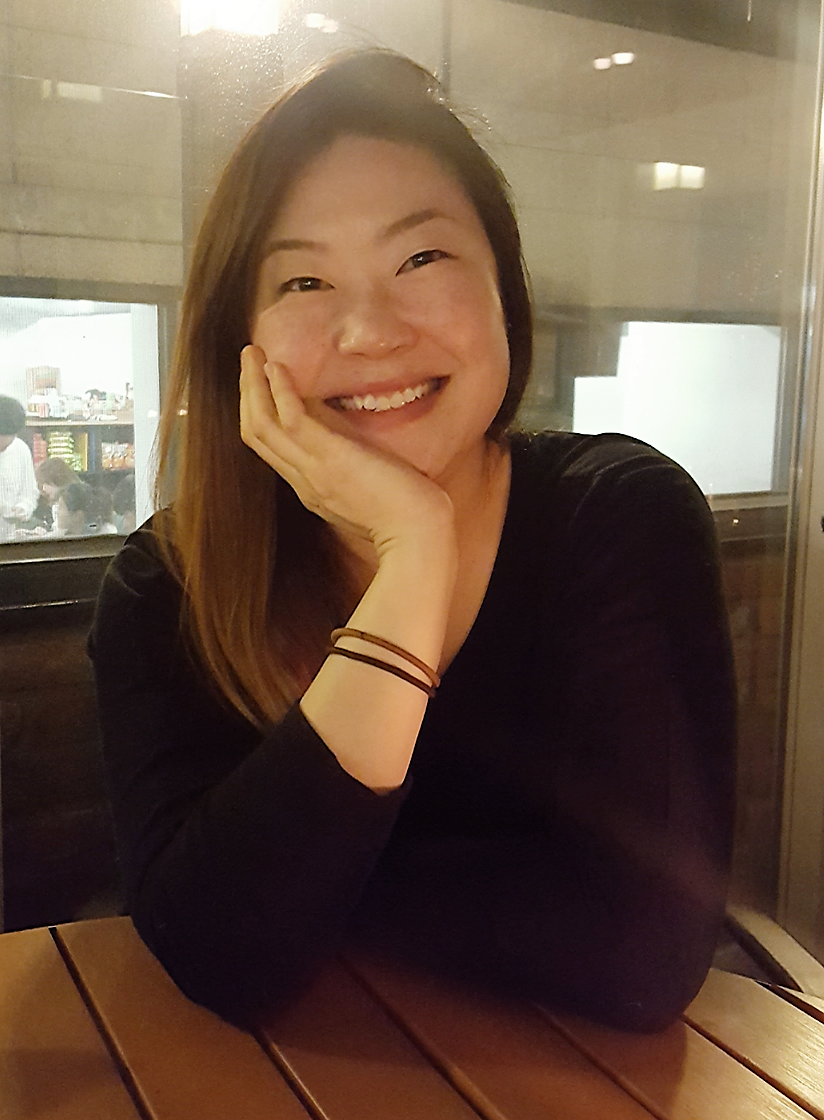 Ji-Young Kim has resided in South Korea since December of 2006. She loves the outdoors and trying new things, especially food. You can see her and her dog (Conan) hitting the trails, biking, or on a picnic at a park. She’s loving her life in Korea. Follow Ji on Instagram: conan_from_korea
Ji-Young Kim has resided in South Korea since December of 2006. She loves the outdoors and trying new things, especially food. You can see her and her dog (Conan) hitting the trails, biking, or on a picnic at a park. She’s loving her life in Korea. Follow Ji on Instagram: conan_from_korea
 Dan Schmidt is a foodie at heart. After eating his way around Korea for six years, he has settled in South Africa with his wonderful wife. He is planning his next adventure in Saudi Arabia to not only teach English but also learn the art of Middle Eastern cuisine. He aspires to attend culinary school and transition career paths into the food services industry.
Dan Schmidt is a foodie at heart. After eating his way around Korea for six years, he has settled in South Africa with his wonderful wife. He is planning his next adventure in Saudi Arabia to not only teach English but also learn the art of Middle Eastern cuisine. He aspires to attend culinary school and transition career paths into the food services industry.
 Sophie Kim is an international Korean, currently living in Berlin, Germany. Sophie grew up in Seoul, S. Korea, has lived in France, and travels frequently to get inspired! Sophie speaks Korean, English, French, and is currently learning German. She is an avid hiker, enthusiastic socialite and one of the most driven persons I’ve had the fortune to meet.
Sophie Kim is an international Korean, currently living in Berlin, Germany. Sophie grew up in Seoul, S. Korea, has lived in France, and travels frequently to get inspired! Sophie speaks Korean, English, French, and is currently learning German. She is an avid hiker, enthusiastic socialite and one of the most driven persons I’ve had the fortune to meet.

Author, Natasha Banky, is an English teacher, travel writer, yoga enthusiast, salsa-dancing wannabe, and loves outdoor activities, particularly hiking and weekend trips around S. Korea. She has lived in England, Canada, and now works in Korea. She plans to see, and eat her way around the world.
Papingsu 팥빙수 shaved-ice dessert; perhaps a topic for the next blog…
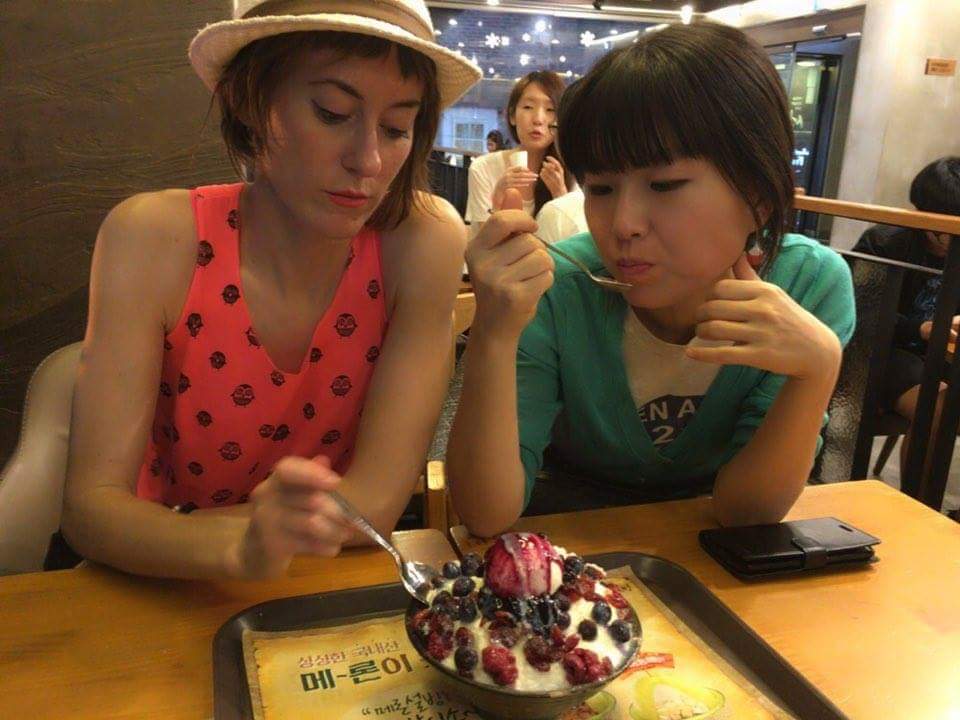
Follow travelandtash on Instagram
Follow travelandtash on Facebook
What are your favourite Korean dishes? Do you have any recommendations or tips to share?
Please like this page, subscribe, and comment below.
Keep learning!

I’ve lived here for 11 years (!) already but I still ask my husband and friends to order for me:-)… If alone with my kids, I rely on photos. How I wish I am as diligent as you in learning these food and these words. I speak survival Korean, even after all these years hahaha… Your guide will be very helpful to the new foreigners.
My favorite is also Dalk Galbi but least favorite – Mul Nengmeon, its just weird having cold noodles swimming in iced water. Your post made me hungry and oh man even after 8 years here, I still don’t know some of the foods you’ve mentioned. But now I do!
Super informative guide! This would’ve saved me so much stress and many awkward dinners out when I was new here, haha. I was really surprised when I first came and realized how easy the alphabet was to learn. It made it so I could at least figure out what I was ordering beforehand. Still, ordering was always daunting, especially when it was something like dalkgalbi requiring choosing different options and some back and forth with the server.
Good on ya for taking the time and effort to put this all together. Sharing it for others to see!
Great informative post! We’ve lived in Korea for almost 2 years and ordering food at a new restaurant can still, sometimes be a struggle. DakGalbi and Bossam are my favourites too – so yummy! Awesome guide for both expats and tourists.
Oh man, I feel like this knowledge needs to be distributed to any person poised to move to Korea and embark on an expat year. I felt the same kind of frustration at being so dependent, then again, to have a personal liason into the culture is a rarity for many travelers so its lucky we do have Korean friends to depend on. I love the call buttons, wish every culture implemented these nifty gadgets in their restaurants. Great post! Can’t wait to refer to it one day 🙂
This is pure GOLD!!!! Thank you so much for putting it together. I’ve been in Korea for a year and decided that my goal is simply to be comfortable with Restaurant Korean because I love eating but like you, I still feel incredibly intimidated while reading and attempting to order from a Korean menu. I’ve been lucky enough to hang out with people that know more Korean than I, but I also want to stop depending on them and order food on my own!
Korean restaurants, especially, as you mentioned, the busy ones or when in a more rural setting, can be challenging no matter how long you’ve been here. Our first few months, we certainly could have used this guide! Until we were more comfortable, we basically ate at restaurants with picture menus or we’d take a picture of their sign out front and then point to the food we were hoping to eat when the waitress came to our table. Living away from the big city, we’ve been forced to learn a whole lot more than we were surviving with while living in Seoul, but we’ll probably never be perfectly comfortable. Thanks for this guide, I’m sure a lot of people will find it useful, and it’s made me pretty hungry!
Super useful information. Our first few months in Korea consisted of only going to places we had been before or to places with pictures on the menu! Samgyupsal and bingsu were definitely my favorites with some soups thrown in as well. Also the gimbap. Who’m I kidding? I loved all the food and it was certainly a reason to stay an extra year! The personal stories/reference with each food type are really great as well.
This is a great guide. Can you update with some more description (briefly) of some of the dishes? I mean I love Gopchang but someone who doesn’t know what it is may be in for a surprise! 🙂 I love the handy phrases and words too.
Very good Tasha x